
views
Zeroing an Optical Refractometer
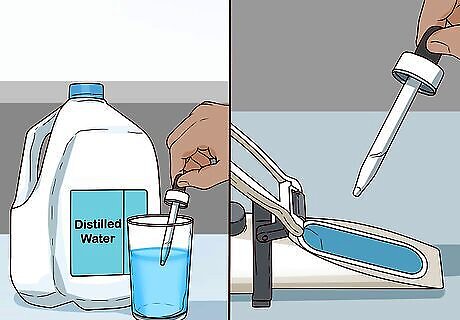
Add a few drops of distilled water to the view plate. Buy a jug of distilled water, or at least use a basic water filter to get clean water. Open the daylight plate, which is a hinged cover that closes over the angled prism. Use an eyedropper or pipette to drop a few drops onto the view plate. It’s important to use pure water that is clean and free of extra particles. If the water has particles in it you won’t be able to accurately calibrate the refractometer. The refractometer needs to be properly calibrated, or you'll get an incorrect reading when you perform a test. A refractometer looks like a small monocular that fits in your hand. It has a view finder on 1 side and a view plate with a lid on the other.
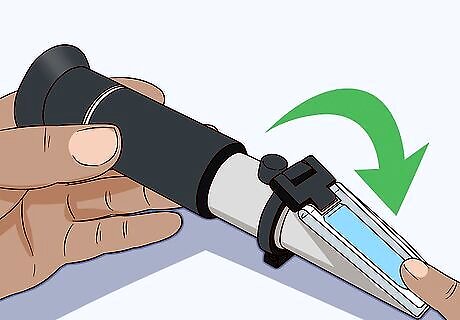
Close the lid and let the water spread. Lower the daylight plate so that it lays flat against the view plate with the water pressed between the plates. The water will spread across the surface of the prism, allowing you to take a Brix measurement. It’s okay if some water spills out over the edges of the prism.

Hold the refractometer up to the light and look into it. Refractometers require a bright light source to show you a reading. Stand outside in bright sunlight when conditions allow it. Otherwise, use the refractometer in a well-lit room. Stand directly under the light source for the best results. Some refractometers are equipped with a light that shines onto the prism, so you don’t need another light source.

Focus the eyepiece, if necessary. Most refractometers allow you to focus the eyepiece. When you look into it, you’ll see multiple lines and numbers. If those are blurry, twist the eyepiece until they come into focus. Not all refractometers require you to focus them.
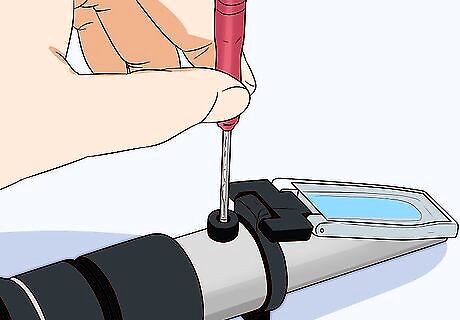
Adjust the zero setting with the knob or screw. Pure water reads at zero, so adjust it as necessary. Check your refractometer’s instructions to see how you adjust the zero setting. Turn the knob or screw until the reading line is exactly on the zero line. Your refractometer may have a simple knob that adjusts the zero setting, or it may include a small tool that allows you to tighten or loosen a screw that adjusts the zero setting. Even if it is off of the zero line by a small fraction, it will affect all other readings.
Testing Brix with an Optical Refractometer
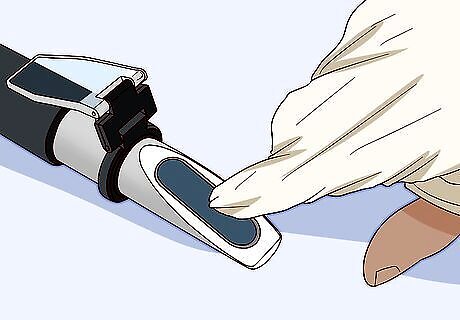
Open the daylight plate and wipe the prism. Open the daylight plate to reveal the glass prism. Use a clean, dry cloth with soft fibers to wipe any dust or residue off of the prism. The type of microfiber cloth you’d use to clean eyeglasses is ideal for wiping the lens off. Don’t use your shirt, or another rough cloth, because you will scratch the glass. A refractometer measures the particles present in a liquid, so if you don’t wipe the lens off first you’ll skew the measurement. After wiping the lens off, use a can of compressed air to blow off any fibers that might be left behind. You can get these cans at office supply stores.
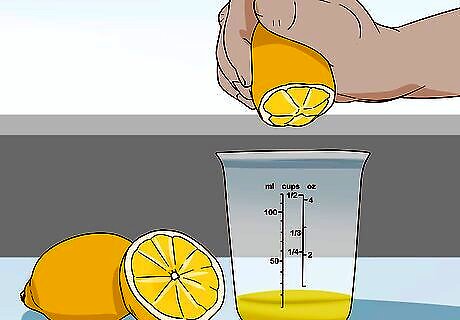
Squeeze out some juice from the fruit or vegetable. You get the best Brix reading from the part of the plant you eat. Only use a leaf if there is no fruit yet. Use a pair of pliers or your fingers to squeeze some of the fruit juice into a small, clean plastic container, like a measuring cup. To avoid a mess, don’t squeeze the juice directly onto the refractometer. It works best to get a sample from the plant and then add a few drops of that to the refractometer. If you use a leaf instead of a piece of fruit, pull it from the plant and fold it a few times. Use a pair of pliers to squeeze liquid from the leaf onto the refractometer's prism to test it.
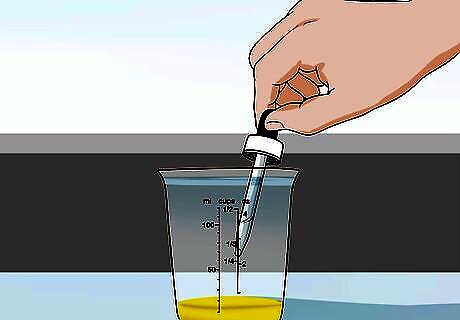
Use an eyedropper to suck some juice up. To easily extract a few drops of liquid from the plastic container, use a small eyedropper or pipette. Suck two to three drops (.1 to .15 ml) up into the pipette. It’s okay if you get more liquid, but you only need a little bit. If you don’t have a dropper, stick a small stirrer straw into the liquid and place your thumb on the end to trap the liquid.
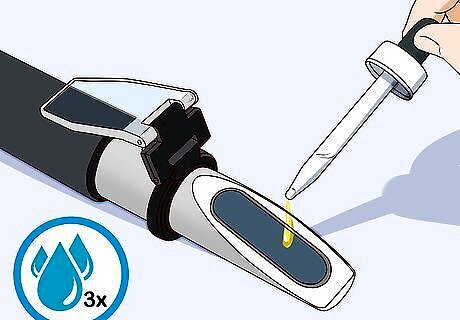
Place some drops of the liquid on the prism. With the daylight plate open, squeeze two to three drops (.1 to .15 ml) of the liquid onto the angled glass piece of the prism. Close the daylight plate so that the liquid spreads evenly across the surface of the prism. If the liquid doesn’t cover the prism, you may need to add more drops so there is enough to get an accurate measurement.

Look through the viewer and focus it. Hold the refractometer horizontally in a bright light source. When you first look into it, the numbers may be blurry. Turn the eyepiece until the numbers come into focus. Some models may not have a way to adjust the focus, and with these models the numbers should be clear as soon as you look into the viewer.
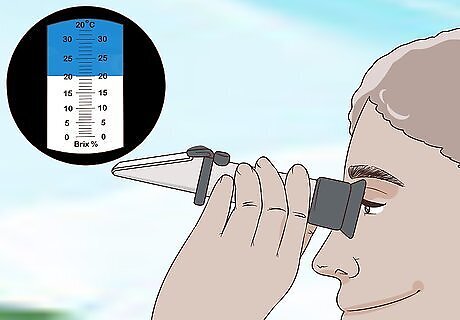
Take notice of where the line in the viewer falls. The refractometer shows a set of lines with numbers on the edges, which correspond to a Brix number. The viewer also shows a distinct line, usually a split between blue or grey and white, which is the Brix number of the sample. The Brix rating of the sample directly affects where the color changes. So the exact spot where the color changes is the Brix rating. For example, your refractometer may measure up to 20 on the Brix scale. If the color changes from blue to white on the line marked 10, then 10 is the liquid's Brix rating.

Learn common Brix ratings for various plants. Brix ratings give you an idea of the health of your plant, so it’s important to know what you are looking for. Jot down the number of your reading and check it against a chart of common plants and what a good Brix number is. For example, a high quality apple rates around 18, while a high quality potato rates eight.


















Comments
0 comment